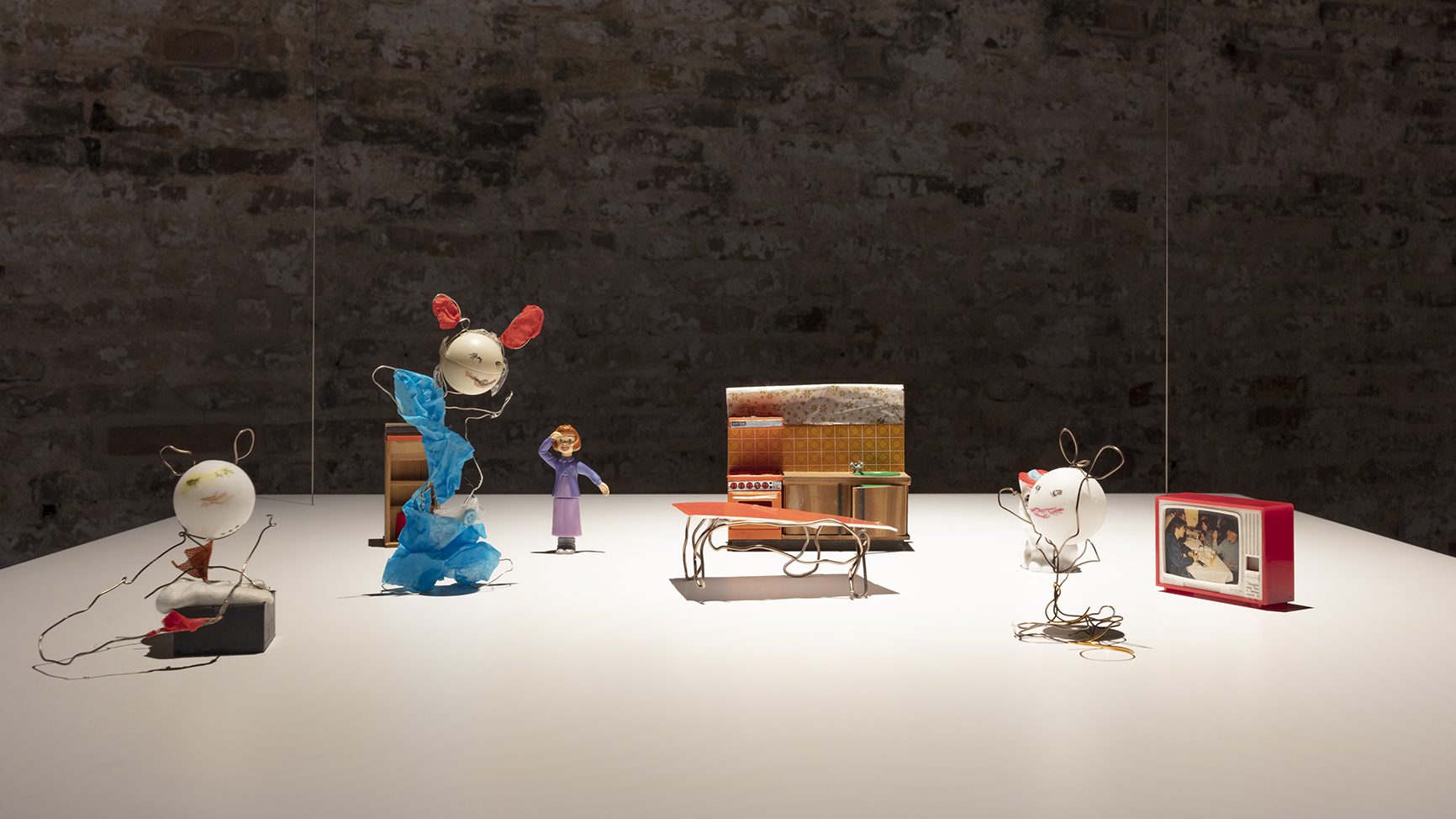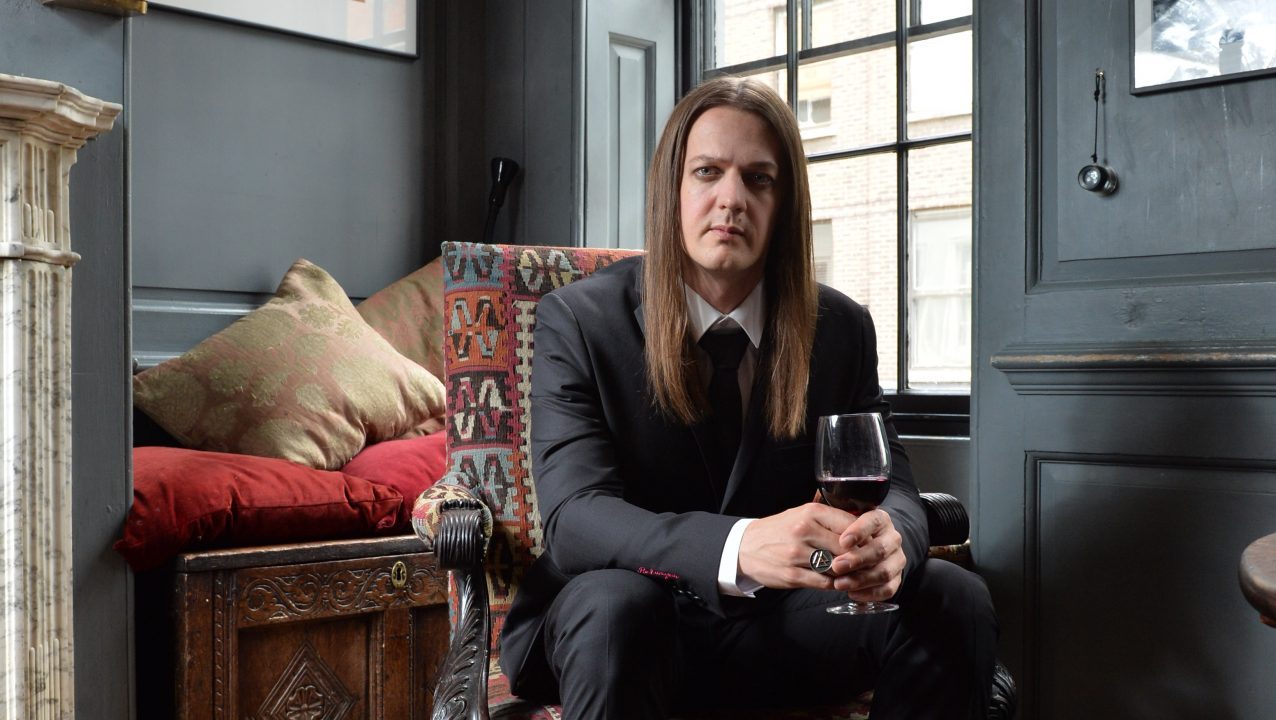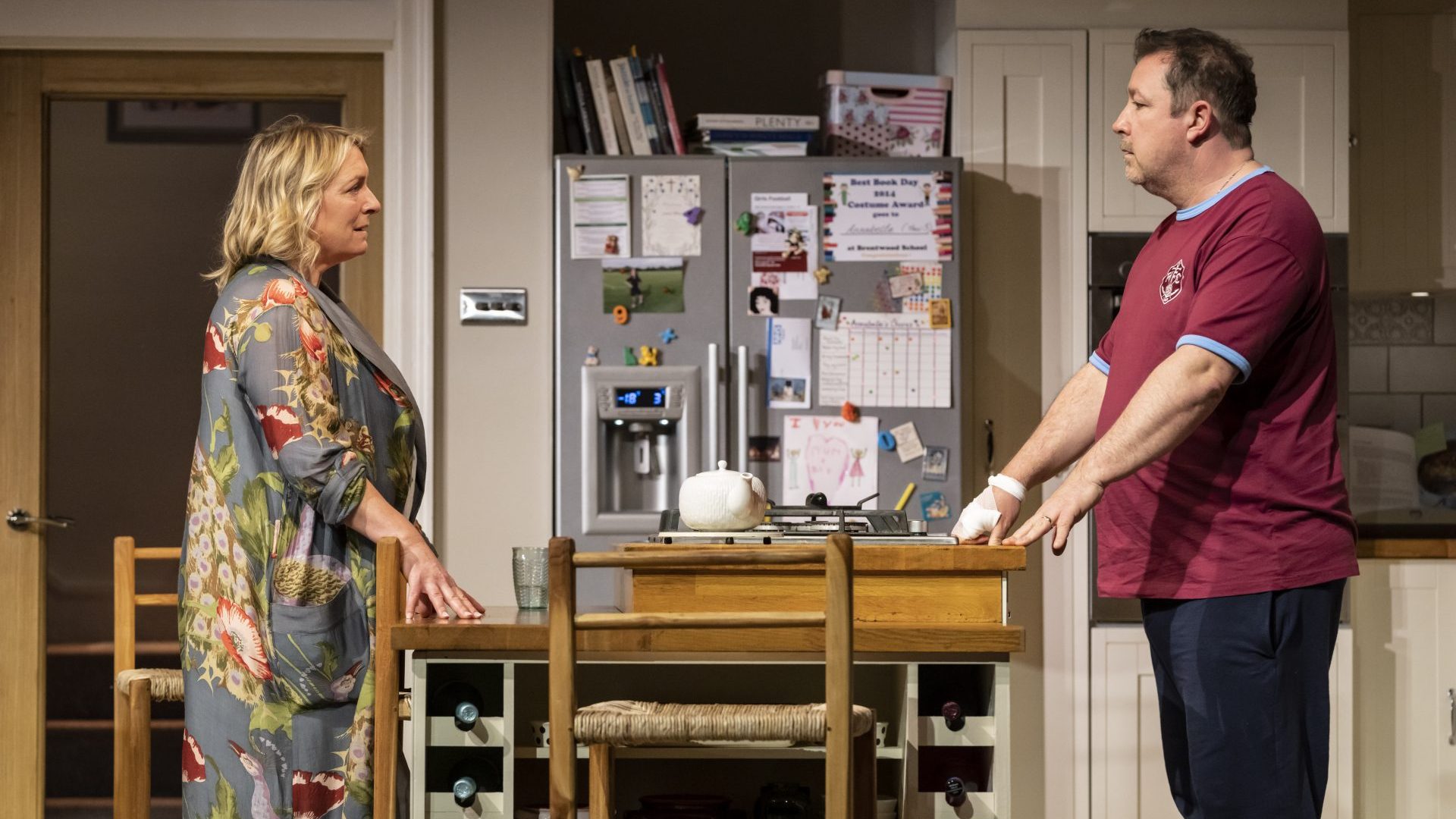Fashioned in loops and twists of metal wire, a troupe of minutely wrought
cats and mice represents Turkey at the Venice Biennale, in an epic tale of
impending catastrophe, adventure and redemption through love.
The installation, titled Once Upon A Time…, is the creation of Füsun Onur, an artist celebrated in Turkey as a pioneer of sculptural works created not from marble or bronze, but from assemblages of lowly, everyday materials. Half-dream, half-fairytale, it unfolds in 21 scenes, suspended on platforms hung at varying levels, so that they seem to float, cloudlike. Each one is spotlit, to pierce the gloom of the vast exhibition space in the Arsenale, a former naval storehouse.
The story begins with a school, where frightened children are distributing pamphlets warning of the looming climate disaster. A mouse called Cingöz hears the news. Cingöz meets Zorba, the artist’s cat, whose face is lovingly depicted on a ping pong ball head, and it is agreed that from now on, cats and mice will work together in a spirit of cooperation.
The story’s first half ends with Cingöz gazing wistfully at a ship on the
Bosphorus, a little toy boat sitting on a froth of pale blue tulle.
The story resumes in Venice, where it turns out Cingöz has been invited by
some friends. Perhaps Cingöz is a proxy for the artist, who, at 85, was unable to travel to Venice herself, agreeing instead to speak to me by phone from Istanbul a few weeks before the exhibition opening. She lives on the banks of the Bosphorus in the house she grew up in, with her cats Zorba and Lolita, and until very recently her older sister, İlhan, who died not long ago, weakened by Covid and old age.
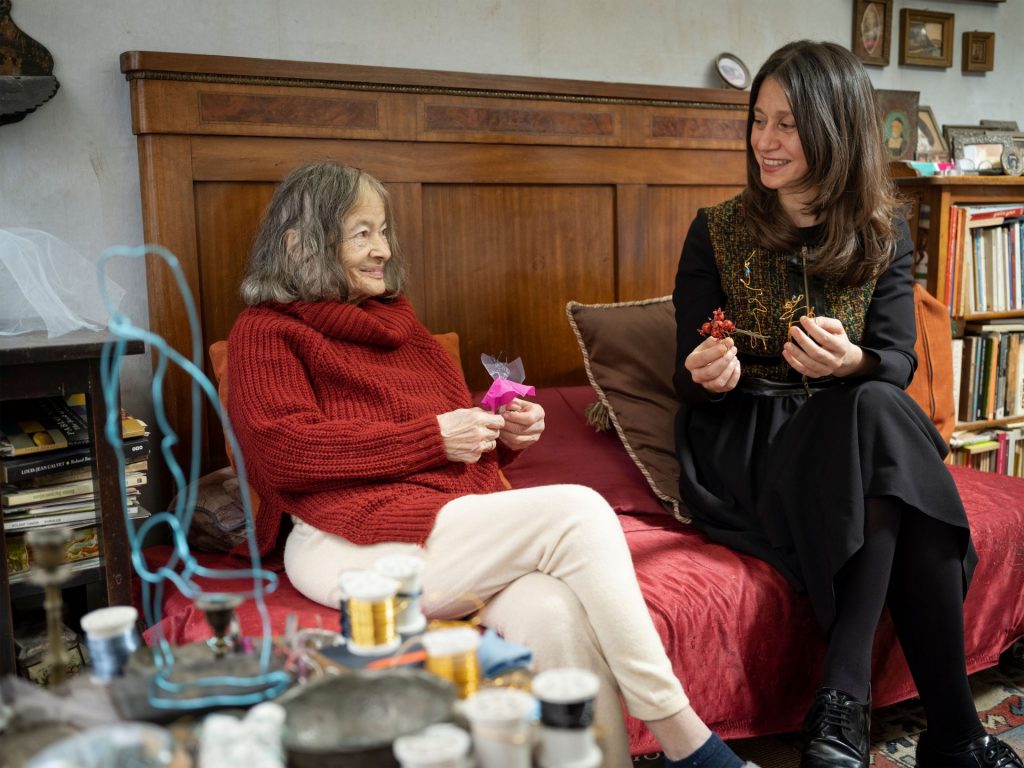
Covid has been a powerful factor in this exhibition: the story’s childlike
quality, its determination and optimism, and the humble nature of its materials – wire, ping pong balls, fabric scraps and pieces of paper – reflect the day-to-day realities of Onur’s life, which in the two years of the pandemic she spent confined to her home. The huge exhibition space emphasises the domestic scale of Once Upon A Time…, which can be packed into a single suitcase, says the curator, Bige Örer.
It was Örer who installed the Venice show, with the artist directing
proceedings via Zoom and following three practice runs in Istanbul. Örer is
the director of İKSV (Istanbul Foundation for Culture and Arts) Contemporary Art Projects, and Istanbul Biennial, opening later this year, and her sensitive appreciation of Onur’s work and character make it clear that she is as much a friend to the artist as a colleague. Her book, published to mark the occasion of Onur’s Venice commission, is the most comprehensive study of the artist’s work to date. In it, Örer describes Once Upon A Time… as “a masterwork that has meaningful things to say for the age in which we live, opening the door for careful eyes to see into a new and exciting world, producing new languages, and learning from non-humans, loving and living together.”
Though Onur’s tiny sculptures speak of isolation and confinement, they transport the viewer to Istanbul, a city that through its culture and history, as
well as its proud diaspora, exists as a realm of the imagination as much as a topographical reality. Just as Zorba the cat anchors Onur’s fantasy story in her own daily life and experience, the famous street cats of Istanbul offer a
conduit to the city’s secrets: cats are never fully ours, slipping as they do easily between this world and their own.
Zorba spends the duration of our phone call sitting on Örer’s lap. He and the other cat, Lolita, live with Onur, but he was previously among the huge number of cats and dogs that live on the city’s streets, their care a traditional undertaking by the city and its inhabitants. “They share the city with us, and they have a really important role in Istanbul,” explains Örer. Still, life on the streets is dangerous, and Örer says that the animals have a short life expectancy. “Sometimes the cats find you, and ask you to look after them,” she says. “Zorba is one of those.”
Asked about her relationship with cats, Onur says simply: “I like them. We are friends.” She explains that following the death of one cat, she and her sister had decided not to take in another. “But this cat Zorba insisted,” she says. “Winter was coming. One day I fed him and closed the door, but he looked at me very sadly. So I said to Ilhan, let’s take him in. It happened all
of a sudden.”
Onur talks of the cats as her equals, and at times it seems that perhaps she
considers them our betters: after all, in Once Upon A Time… it is the animals
who have the wisdom to cooperate in the face of a man-made disaster. It is notable, too, that though children feature at the very beginning of the story, they are heard of no more. Like all fairy stories, there is a dark,
unsettling aspect to Onur’s apparently whimsical tale.
Once Upon A Time… continues in Venice, where Cingöz is reunited with his mouse friends, and also Zorba, who seems also to have made the trip from Istanbul. In this part of the story, Onur revisits music, a favourite theme that is expressed here in scenes of dancing, animated by colour as well as Onur’s expressive sculpted forms.
Onur’s lack of concern for traditional definitions of art and sculpture give her works an unusually ephemeral character: at times this can be fatal for the work, and at the opening of the Venice show, scenes close to the ground were in danger of being trodden underfoot.
Even so, Onur’s indifference to posterity is one of her most endearing, and perhaps artistically significant traits. The small domestic objects that feature in her work – the little boats in Once Upon A Time…, or the tiny angel that appears in Cingöz’s dream, have probably been selected from some forgotten childhood treasure trove, to which they may well return eventually,
or they may feature in a different work. Other pieces of her art may simply be thrown into the Bosphorus, the resting place for many of her less successful works, it is rumoured. In fact, Onur’s self-editing is not just confined to the work she is unhappy with, and seems to be a pragmatic approach to limited space for an artist whose works will not always be accommodated in public or private collections. As far back as 1992, she spoke of discarding her works, saying: “When they overcrowd me, I take a
good photograph of each and throw them in the sea.”
Onur’s anarchic approach to her own work has been offset over the years by the efforts of her sister, İlhan. Bige Örer says she was “an amazing figure” who kept an archive that has allowed some destroyed works to be recreated for exhibitions.
Onur has always had support from her family in pursuing what has been at times a difficult path. Her parents encouraged her early efforts as a sculptor when, as a child, she would make clay models based on scenes from films and concerts. In the programme of secularisation that occurred following the creation of the Republic of Turkey in 1923, sculpture was inherently radically modern, moving away from the limits on sculpture imposed by Islamic law. Not only that: female sculptors were exceedingly rare. Onur was only the second woman to have enrolled in the sculpture department of the Istanbul State Academy of Fine Arts from where she graduated in 1960, having been a pupil of one of Turkey’s pioneering sculptors, Ali Hadi Bara.
In contrast, a period of study in America made her something of an outsider when she returned to Istanbul in the late 1960s, and she worked hard to persuade Turkish audiences that her large abstract sculptures from this period were not just derivative versions of works by American artists.
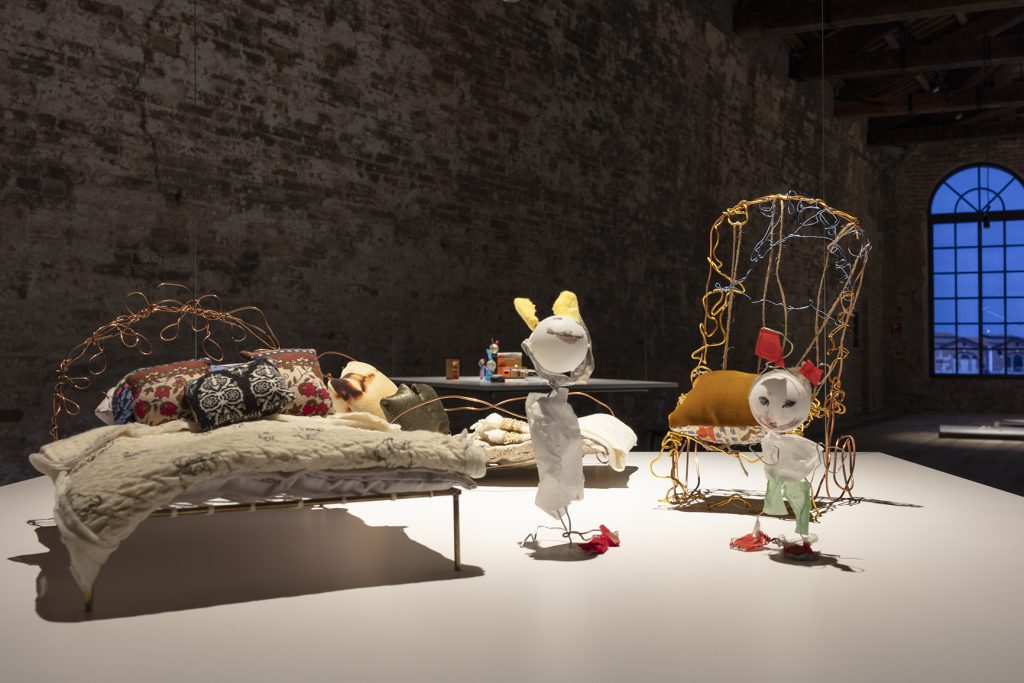
Though the connections are not always obvious, certain themes and preoccupations run through Onur’s career. One of the first series of works to be exhibited in Turkey was Dividing Space on a White Piece of Paper, 1965-66. Though two dimensional, it has echoes in the current work, which, as the
direct product of the artist’s fingers, is as much a drawing as a sculpture. The
sculptor’s actions linger on in the easy loops that describe a cat’s head, or the
tight coils that so fully express anxiety or fear. Even more fundamentally, as
the manipulation of a line, the wire sculptures are a form of drawing in air.
The domestic themes that are perhaps the most beguiling aspect of her work first appeared in the 1980s, when she evoked the memories accumulated in domestic objects and pieces of furniture, imbuing them with narrative and emotional power.
Though domesticity and childhood are major themes in her work, Onur took the decision early on not to have a family of her own. “There was a pub in Baltimore where the students went, and one day a man came to me and said ‘You’re an artist?’. ‘Everybody here is an artist,’ I said. He said ‘If you are born in this month, you will be a very good artist. But don’t get married. Because you will want to give something to them too, and then your work will be broken.’ And it’s true that if there was a child crying, I couldn’t just say, ‘cry for your father.’”
Once Upon A Time… is a fairy tale of sorts, but there is nothing sentimental
about its ambiguous ending. In Venice, Cingöz meets a female mouse with
whom he dances and falls in love. The final scene is a gondola, decorated as if to take them on a honeymoon, but the mice are nowhere to be seen – what has become of them, we will never know.
The installation will return to Istanbul once the exhibition is over and though its future home has not yet been decided, it is surely safe from a
watery grave in the Bosphorus. For any artist, a Venice commission is a
career-defining event, and for Onur, an artist who pioneered installation
sculpture in Turkey and who is a “grandmother” to generations of young artists, it confirms her place not just in her homeland, but in the world.
Once Upon A Time… by Füsun Onur is at the 59th Venice Biennale, Pavilion of Turkey, until November 27


